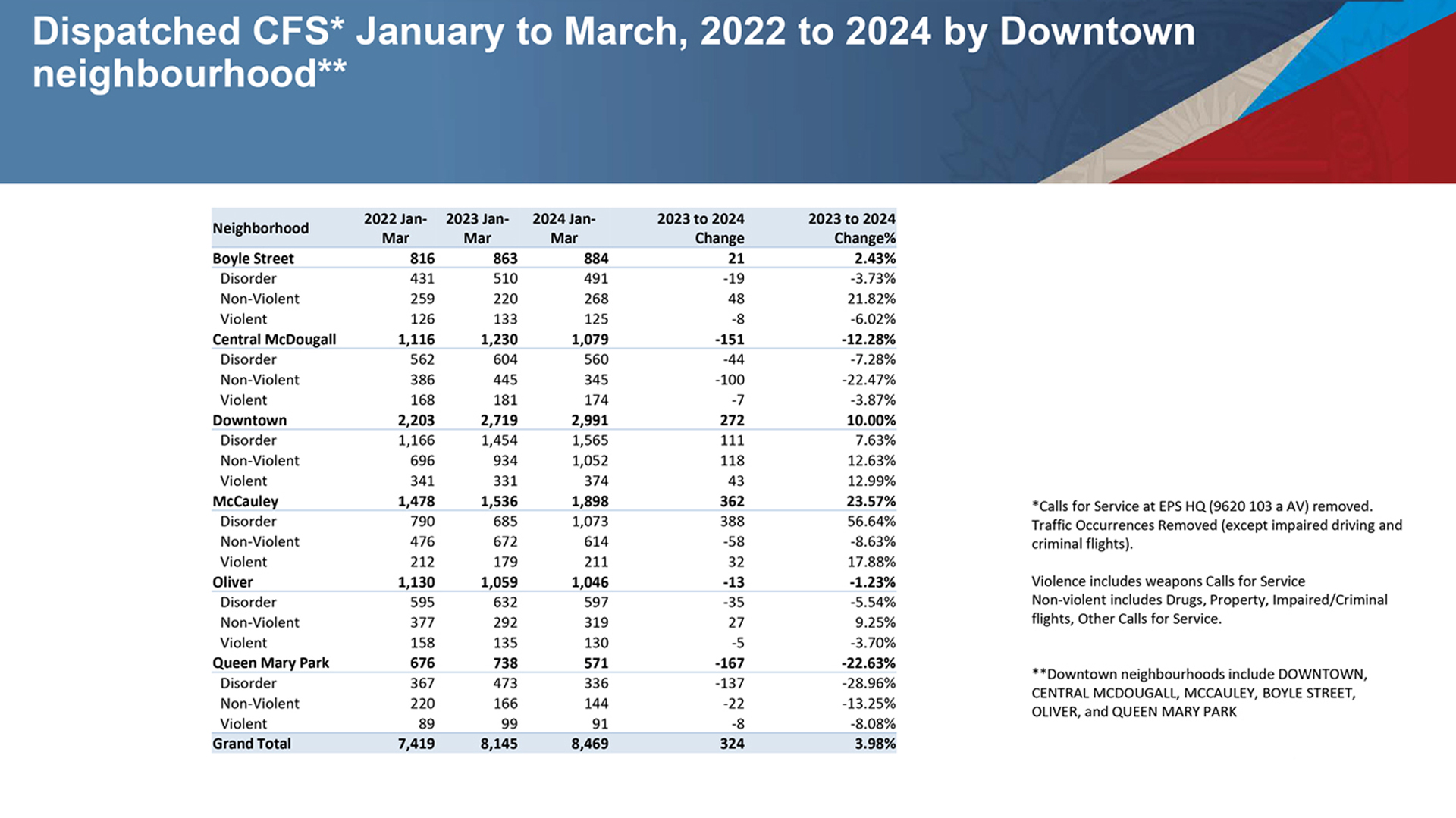The EPS is releasing its 2023 year-end crime analysis, which provides an overview of crime, violence and victimization in our city. The analysis reflects an overall 7.2% reduction in the city’s crime rate, as a result in part of a decrease in property crimes and targeted policing initiatives and partnerships. It also reflects an ongoing issue with violent crime and the severity of violent incidents that police are managing. In 2023, Edmonton’s total crime severity increased by 4.6%, while the violent crime severity increased by 7.3%.
STATEMENT FROM EPS CHIEF DALE MCFEE:
“While we are pleased to see clear indications of the effectiveness of our officers and initiatives, Edmonton continues to experience an unacceptable level of violence in our communities. After several years of uncertainty, 2023 was the first year since 2020 in which EPS began to have some renewed stability in EPS funding which has, in turn, allowed the service to apply additional focus and planning flexibility as it deploys its resources. In turn, there are clear improvements in areas where EPS has been able to focus including, downtown, Chinatown and throughout our LRT and Transit system. Where police resources are applied, the results are encouraging, and gains are being made. There is more work to do, especially around violence in our community.
Key initiatives brought forward last year included Safer Public Spaces, the city-wide expansion of our Human-centred Liaison and Partnership Program (HELP) and the Police and Crisis Response Team (PACT) programs, as well as the stand up of the new provincial navigation centre in early 2024, which works in tandem with EPS and a range of other community partners. All of these programs are making a difference, especially when managing social disorder.
EPS and its partners are pulling on the rope together now, and the initial results are promising. However, the increasing rates of violence and severity of violence are concerning. An emergent Crime Management Plan, enhanced resources to support our Guns and Gangs team and to stand up an additional Firearms Investigation Unit, and growing community partnerships all will help us to adapt to address the increasing levels of violence plaguing our city.”
- Chief Dale McFee, Edmonton Police Service
HIGHLIGHTS OF THE 2023 YEAR-END CRIME ANALYSI
Crime Rate:
Edmonton’s total crime rate city-wide decreased by 7.2% between 2022 and 2023.
Table 1 – Edmonton’s total crime rate per 100,000 people
.jpg?h=324&w=575)
Crime Severity:
Edmonton’s total crime severity increased by 4.6%. This increase can be attributed to an increase in violent crime severity (7.3%).
Table 2 – Edmonton’s crime severity
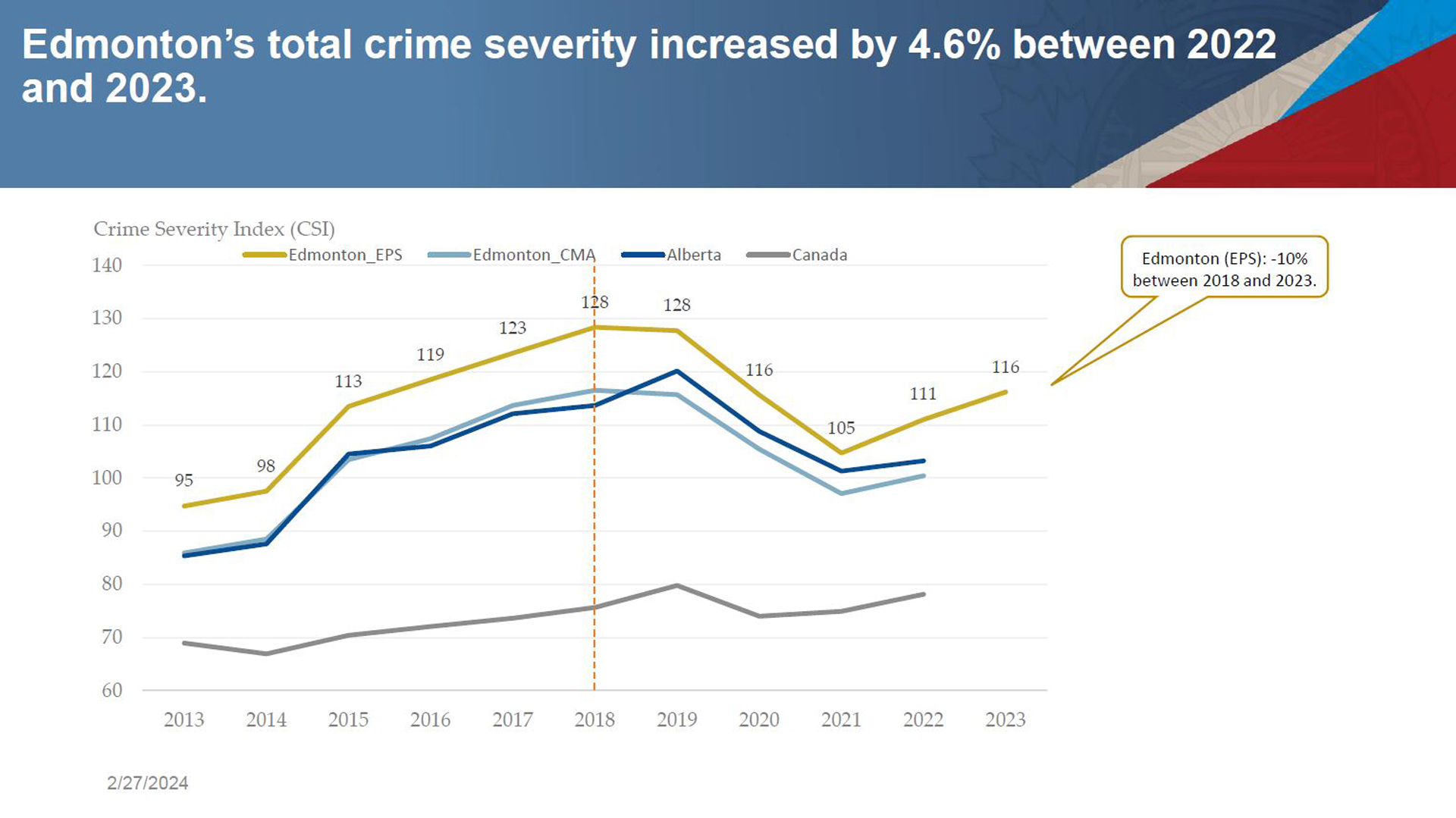
Criminal Incidents:
The total number of city-wide criminal incidents decreased by 7.2% (-6,980 incidents). The top criminal incidence types city-wide in 2023 were:
- Fail to comply with order (15%), Shoplifting $5,000 or under (10%), Theft $5,000 or under from motor vehicle (9%), Mischief (7%), and Fraud (7%).
Violent criminal incidents:
The total number of city-wide violent criminal incidents increased by 6.6% (+995 incidents) in 2023. The violent criminal incidence types with the largest increases city-wide:
- Assault – Level 1 +394 (+8%)
- Assault – Level 2: Weapon/bodily harm +208 (+6%)
- Intimidation of a non-justice participant +110 (+115%)
Table 3 – Edmonton’s criminal & violent incidents
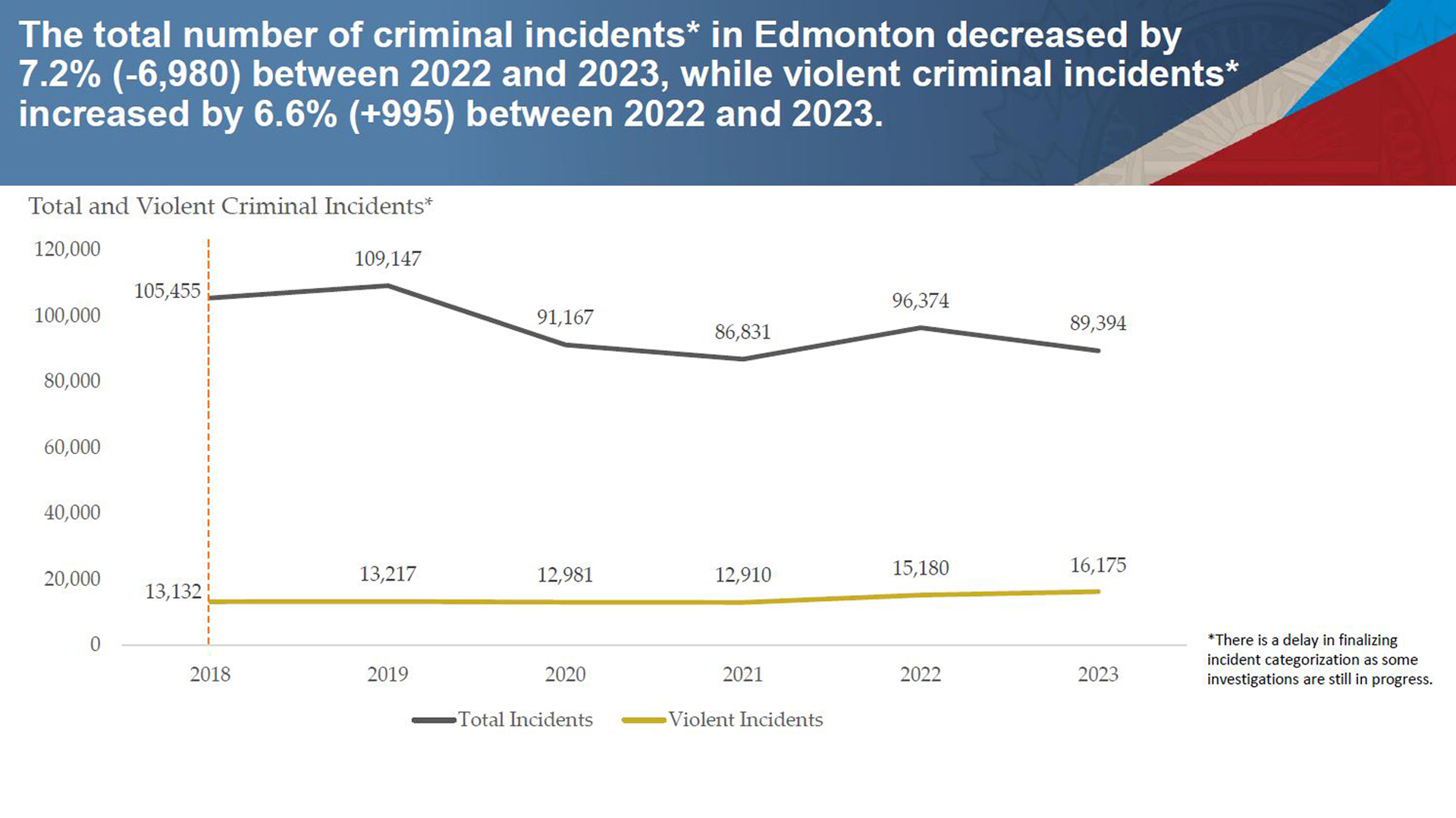
Criminal incidents involving weapons:
Criminal incidents involving the presence or use of the most common weapons increased by 9% in 2023. Firearm incidents increased by 16% (+65), knife incidents increased by 1% (+9), while caustic spray incidents increased by 14% (+121) city-wide.
Table 4 –Edmonton’s criminal incidents involving weapons
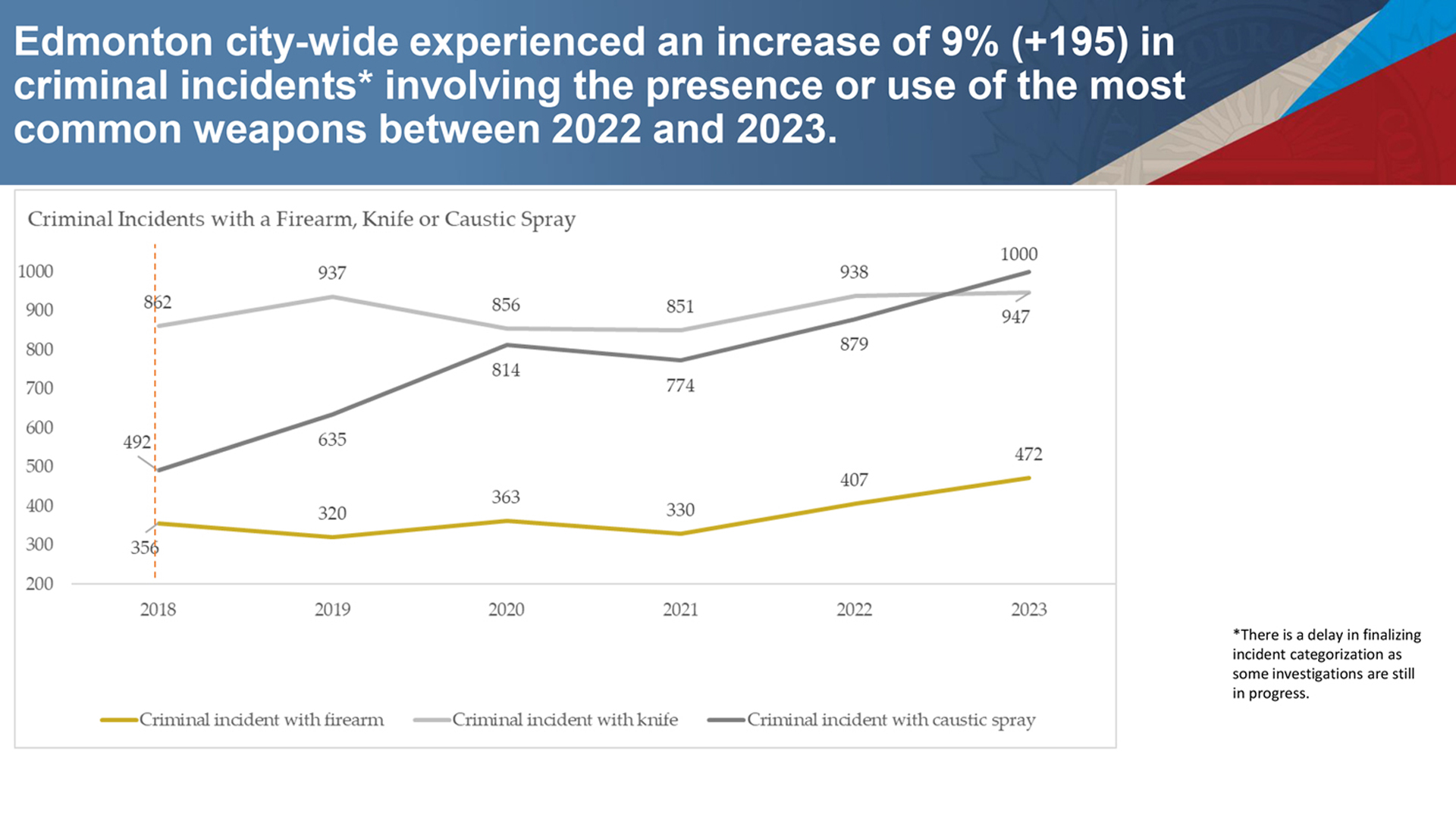
Crime severity & CFS at LRT/Transit Centres:
The average crime severity at LRT Stations/Transit Centres deceased by 11.3% between 2022 and 2023. Calls for service to LRT Stations and Transit Centres increased by 18.8%.
Table 5 – Average crime severity & CFS at LRT/Transit Centres
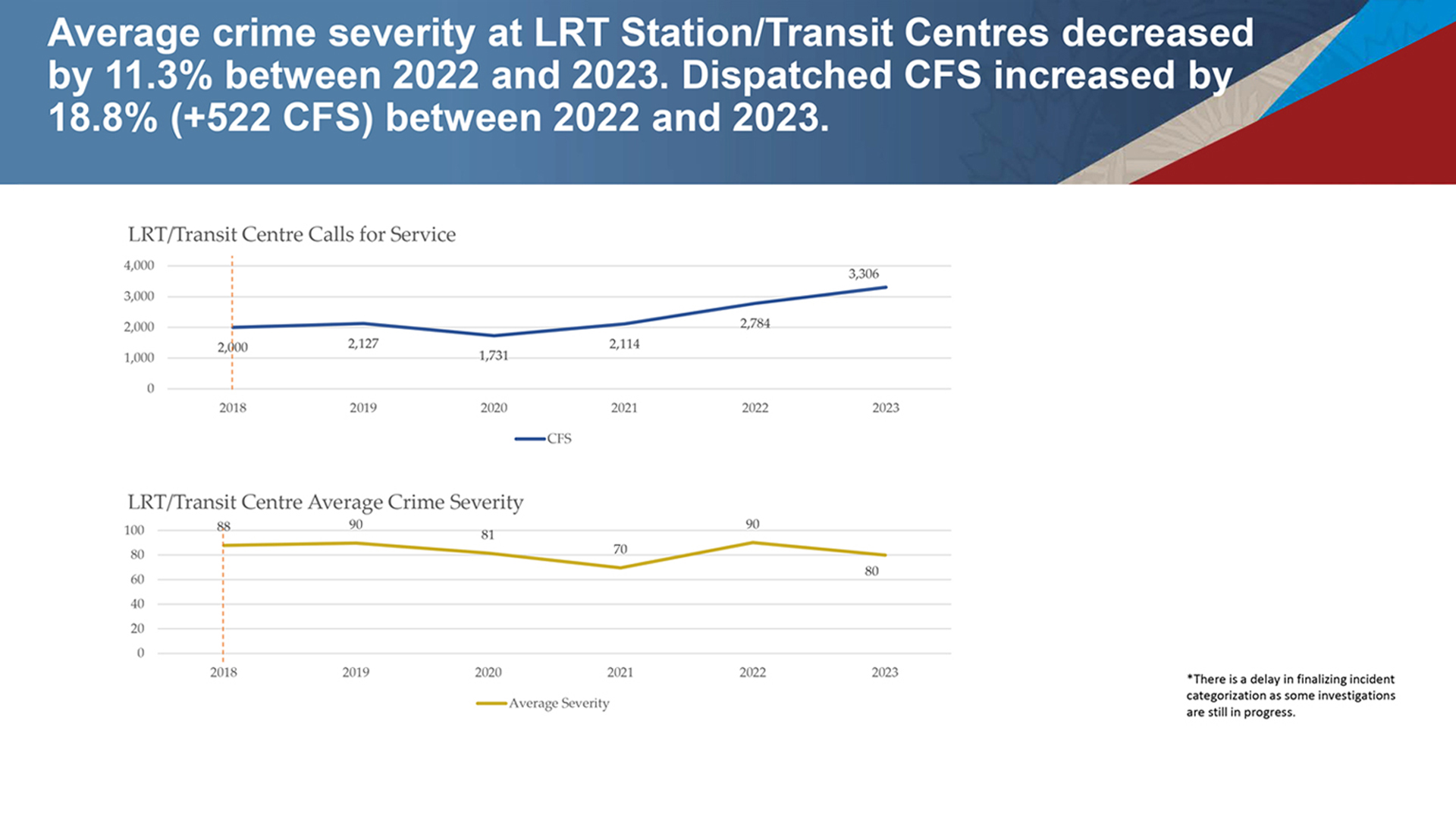
Dispatched CFS January to March 2022-2024 by Downtown neighborhood:
The proportion of EPS member-generated to non-member generated dispatched calls for service (CFS) increased in 2024 Q1 compared to 2023 Q1. In 2023 Q1, member-generated CFS were 17% of all dispatched CFS; in 2024 it is up to 21%.
Looking specifically at McCauley, the change in member-generated CFS for disorder went from 66 calls in 2023 Q1 to 290 in 2024 Q1.
Member-generated CFS are an indication of the increased amount of proactive and crime prevention work EPS and its partners are undertaking.
Table 6 – Dispatched CFS January to March 2022-2024 by Downtown neighbourhood
